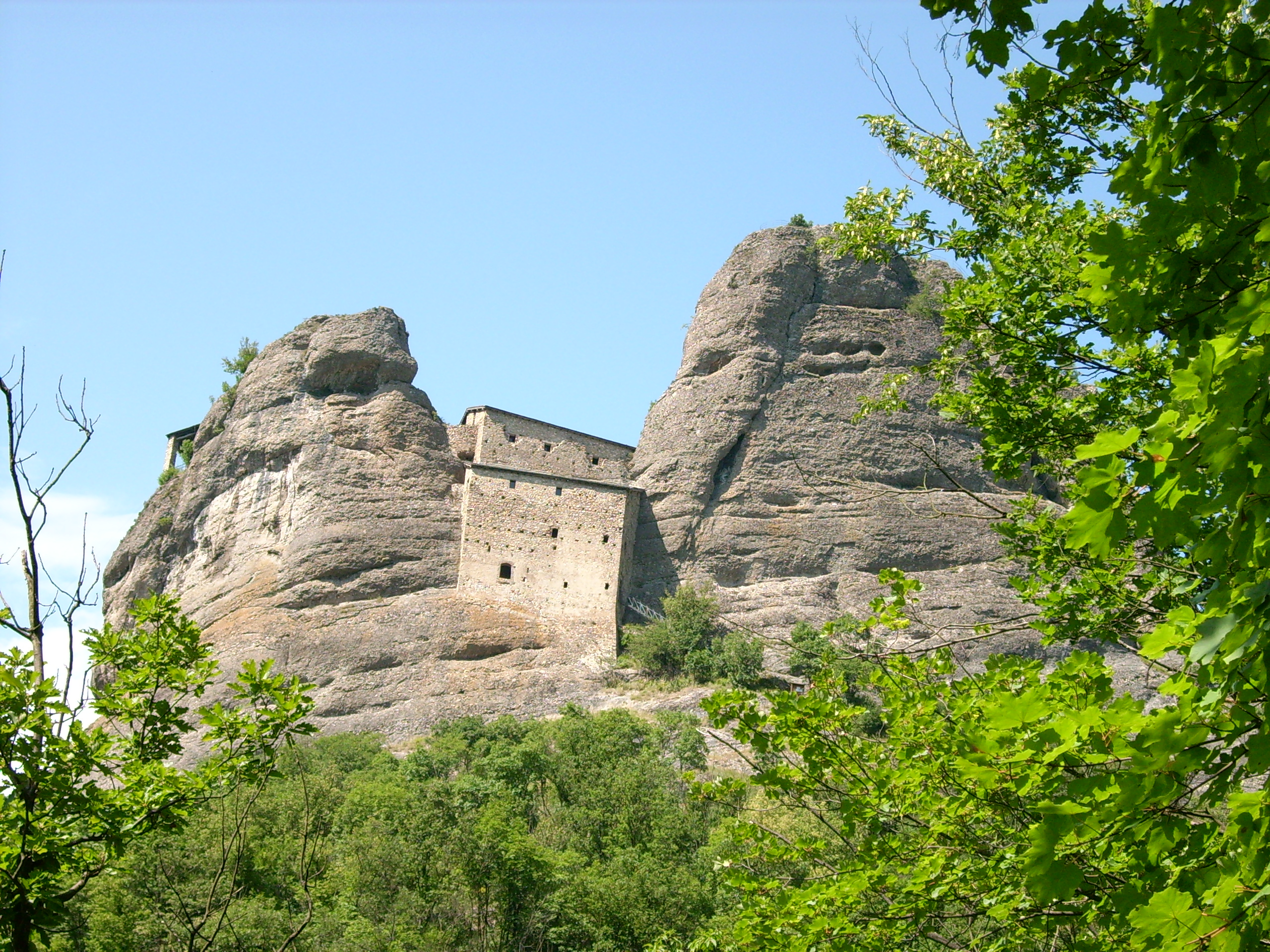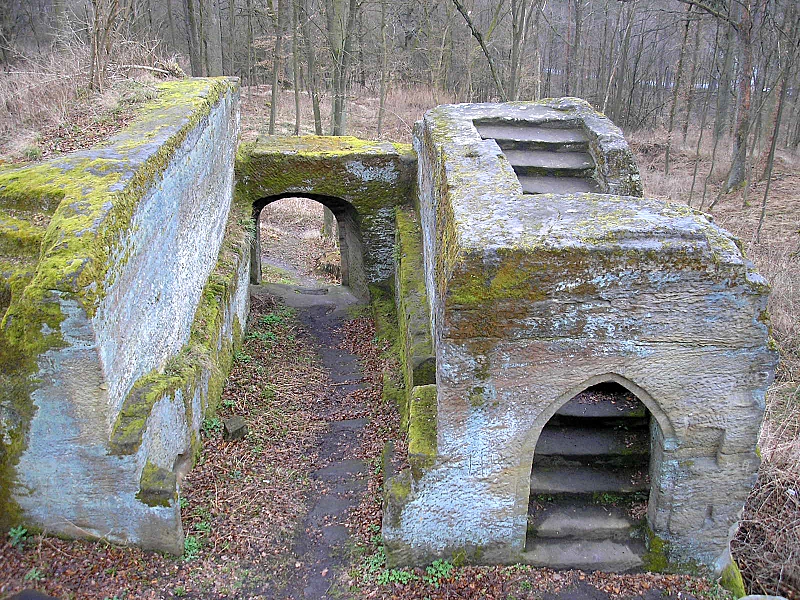Rock Castle on:
[Wikipedia]
[Google]
[Amazon]
 A rock castle () is a type of medieval
A rock castle () is a type of medieval
 By contrast with the usual hill castles, that utilize the bedrock as a foundation for the individual buildings, the entire structure of rock castles is shaped by natural, often isolated
By contrast with the usual hill castles, that utilize the bedrock as a foundation for the individual buildings, the entire structure of rock castles is shaped by natural, often isolated 
 In Iran:
*
In Iran:
*
 A rock castle () is a type of medieval
A rock castle () is a type of medieval castle
A castle is a type of fortification, fortified structure built during the Middle Ages predominantly by the nobility or royalty and by Military order (monastic society), military orders. Scholars usually consider a ''castle'' to be the private ...
that directly incorporates natural rock outcrops into its defences to such an extent that the rock formations define the structure of the castle. Topographically, rock castles are classified as hill castle
A hill castle or mountain castle is a castle built on a natural feature that stands above the surrounding terrain. It is a term derived from the German ''Höhenburg'' used in categorising castle sites by their topographical location. Hill castles a ...
s.
Layout
rock formation
A rock formation is an isolated, scenic, or spectacular surface rock (geology), rock outcrop. Rock formations are usually the result of weathering and erosion sculpting the existing rock. The term ''rock Geological formation, formation ...
s, such as rock towers or crags. Typically a rock castle was built on a rock that was able to provide a fortified position without any great additions. In simple fortifications of this type the rock could be climbed on simple ladders that were hoisted up in times of danger. Rock castles would also have wooden and stone structures built on or against them. The morphological characteristics of the rock were crucial to the extent and nature of any structures.
The rock on which the castle stands is always incorporated into its design. If the rock is easy to work (e.g. sandstone
Sandstone is a Clastic rock#Sedimentary clastic rocks, clastic sedimentary rock composed mainly of grain size, sand-sized (0.0625 to 2 mm) silicate mineral, silicate grains, Cementation (geology), cemented together by another mineral. Sand ...
), rooms, passages, steps, well shafts and cisterns were invariably hacked out of it. The buildings, made of wood or stone, stood on or next to the rock and used it as a foundation or walls. The remains of wooden structures are not usually preserved today, but their location and appearance can be partially gauged by the joist bearings and joist holes still visible in the rock.
Rock castles occur in large numbers in the southern Palatinate (Palatinate Forest
The Palatinate Forest (; ), sometimes also called the Palatine Forest, is a List of landscapes in Rhineland-Palatinate, low-mountain region in southwestern Germany, located in the Palatinate (region), Palatinate in the state of Rhineland-Palatina ...
), in northern Alsace
Alsace (, ; ) is a cultural region and a territorial collectivity in the Grand Est administrative region of northeastern France, on the west bank of the upper Rhine, next to Germany and Switzerland. In January 2021, it had a population of 1,9 ...
( North Vosges) as well as in North Bohemia
North Bohemia (, ) is a region in the north of the Czech Republic.
Location
North Bohemia roughly covers the present-day NUTS regional unit of ''CZ04 Severozápad'' and the western part of ''CZ05 Severovýchod''.
From an administrative perspec ...
and Saxon Switzerland, where great sandstone rocks provide the necessary prerequisite for their construction.
Most rock castles no longer exist today. Often the site was slighted
Slighting is the deliberate damage of high-status buildings to reduce their value as military, administrative, or social structures. This destruction of property is sometimes extended to the contents of buildings and the surrounding landscape. It ...
and then used by local residents as a stone quarry, so that apart from man-made alterations to the rocks themselves, only a few traces are still visible. However, several rock castles, like the ruins of Neuwindstein still have substantial wall remains. A few rock castles were rebuilt in more recent times, e. g. Berwartstein Castle at the end of the 19th century and the imperial castle of Trifels Castle, which was to have become a "site of national remembrance
National memory is a form of collective memory defined by shared experiences and culture. It is an integral part to national identity.
It represents one specific form of cultural memory, which makes an essential contribution to national group coh ...
" (''nationalen Weihestätte'') during the Nazi era
Nazi Germany, officially known as the German Reich and later the Greater German Reich, was the German state between 1933 and 1945, when Adolf Hitler and the Nazi Party controlled the country, transforming it into a totalitarian dictat ...
. In both cases it was not a reconstruction of the medieval fortification but a contemporary new design.

Rock-hewn castles
Castle researcherOtto Piper
Otto Piper (1841–1921) was a German architectural historian who, with August von Cohausen (1812–1896), is regarded as one of the two founders of scientific research into castles.
Life
Otto Piper was born on 23 December 1841 in Röckwitz, the ...
used the German phrase ''ausgehauene Burg'' (literally: "hewn-out castle") for castles that had rooms artificially hewn out of the rock on which the castle stood. Piper, Otto: Burgenkunde. Bauwesen und Geschichte der Burgen. Munich, 1912, p. 559. His examples of such rock-hewn castles include Fleckenstein, Trifels and Altwindstein. From a constructional point of view there is a close relationship with cave castles, which are also often enhanced with rooms artificially cut out of the rock.
False interpretations
The shapes carved out of the rock, such as foundation footings andputlock hole
Putlog holes or putlock holes are small holes made in the walls of structures to receive the ends of poles (small round logs) or beams, called putlogs or putlocks, to support a scaffolding. Putlog holes may extend through a wall to provide staging ...
s, are often wrongly interpreted by laymen as prehistoric or early history heathen cult sites. In some cases this has resulted in tourists being attracted, which in turn has caused considerable damage to these monuments. Foremost amongst these are Frankish castles in the HaĂźberge Hills
The HaĂźberge (alternative spelling: Hassberge) are a hill range, up to , north of the river Main in Lower Franconia in the German state of Bavaria. The hills are in the county of Bamberg and divided by the Main valley from their sister hills, ...
, notably Lichtenstein Castle. The neighbouring castle of Rotenhan and others were inundated with visitors from throughout Europe. However, there is no archaeological evidence, as a rule, of pre-medieval use as site for cult rituals or sacrifices.
Important rock castles
 In Iran:
*
In Iran:
* Alamut Castle
Alamut (, meaning "eagle's nest") is a ruined mountain fortress located in the Alamut region in the South Caspian Sea, Caspian, near the village of Gazor Khan in Qazvin Province in Iran, approximately 200 km (130 mi) from present-day Teh ...
* Saru castles
* Babak Fort
In Italy:
* , Sicily
Sicily (Italian language, Italian and ), officially the Sicilian Region (), is an island in the central Mediterranean Sea, south of the Italian Peninsula in continental Europe and is one of the 20 regions of Italy, regions of Italy. With 4. ...
* , Liguria
Liguria (; ; , ) is a Regions of Italy, region of north-western Italy; its Capital city, capital is Genoa. Its territory is crossed by the Alps and the Apennine Mountains, Apennines Mountain chain, mountain range and is roughly coextensive with ...
In France:
* Château de Hohbarr, Bas-Rhin
Bas-Rhin () is a department in Alsace which is a part of the Grand Est region of France. The name means 'Lower Rhine', referring to its lower altitude among the two French Rhine departments: it is downstream of the Haut-Rhin (Upper Rhine) de ...
* Château de Hohenbourg, Bas-Rhin
* Château du Fleckenstein, Vosges
The Vosges ( , ; ; Franconian and ) is a range of medium mountains in Eastern France, near its border with Germany. Together with the Palatine Forest to the north on the German side of the border, they form a single geomorphological unit and ...
In Germany:
* Altdahn Castle
Altdahn Castle () is a castle ruin in the Palatinate Forest, the German part of the Wasgau region. It is located near the town of Dahn in Rhineland-Palatinate, Germany. It stands above Normalnull, sea level (NN).
Location
The rock castle of ...
, Palatinate Forest
The Palatinate Forest (; ), sometimes also called the Palatine Forest, is a List of landscapes in Rhineland-Palatinate, low-mountain region in southwestern Germany, located in the Palatinate (region), Palatinate in the state of Rhineland-Palatina ...
* Berwartstein Castle, Palatinate Forest
* Grafendahn Castle, Palatinate Forest
* Königstein Fortress, Saxon Switzerland
* Neurathen Castle, Saxon Switzerland
* Scharzfels Castle, Harz perimeter
* Spangenberg Castle, Rhineland-Palatinate
Rhineland-Palatinate ( , ; ; ; ) is a western state of Germany. It covers and has about 4.05 million residents. It is the ninth largest and sixth most populous of the sixteen states. Mainz is the capital and largest city. Other cities are ...
* Tanstein Castle, Palatinate Forest
* Trifels Castle, Palatinate
In Austria:
* Arbesbach Castle, Lower Austria
Lower Austria ( , , abbreviated LA or NÖ) is one of the nine states of Austria, located in the northeastern corner of the country. Major cities are Amstetten, Lower Austria, Amstetten, Krems an der Donau, Wiener Neustadt and Sankt Pölten, which ...
* DĂĽrnstein Castle, Lower Austria
Lower Austria ( , , abbreviated LA or NÖ) is one of the nine states of Austria, located in the northeastern corner of the country. Major cities are Amstetten, Lower Austria, Amstetten, Krems an der Donau, Wiener Neustadt and Sankt Pölten, which ...
In the Czech Republic:
* Frýdštejn Castle, Český ráj
* Helfenburk Castle (North Bohemia), Dauba Switzerland
* Rotštejn Castle, Český ráj
* Šaunštejn Castle, Bohemian Switzerland
* Sloup Castle, Lusatian Mountains
The Lusatian Mountains (; ; ) are a mountain range of the Western Sudetes on the southeastern border of Germany with the Czech Republic. They are a continuation of the Ore Mountains range west of the Elbe valley. The mountains of the northern, G ...
* Valečov Castle, Český ráj
* Vranov Castle, Český ráj
In Turkey:
* Rumkale
References
Literature
* * Walter Herrmann: ''Auf rotem Fels''. G. Braun Buchverlag Karlsruhe, {{Authority control Castles by type